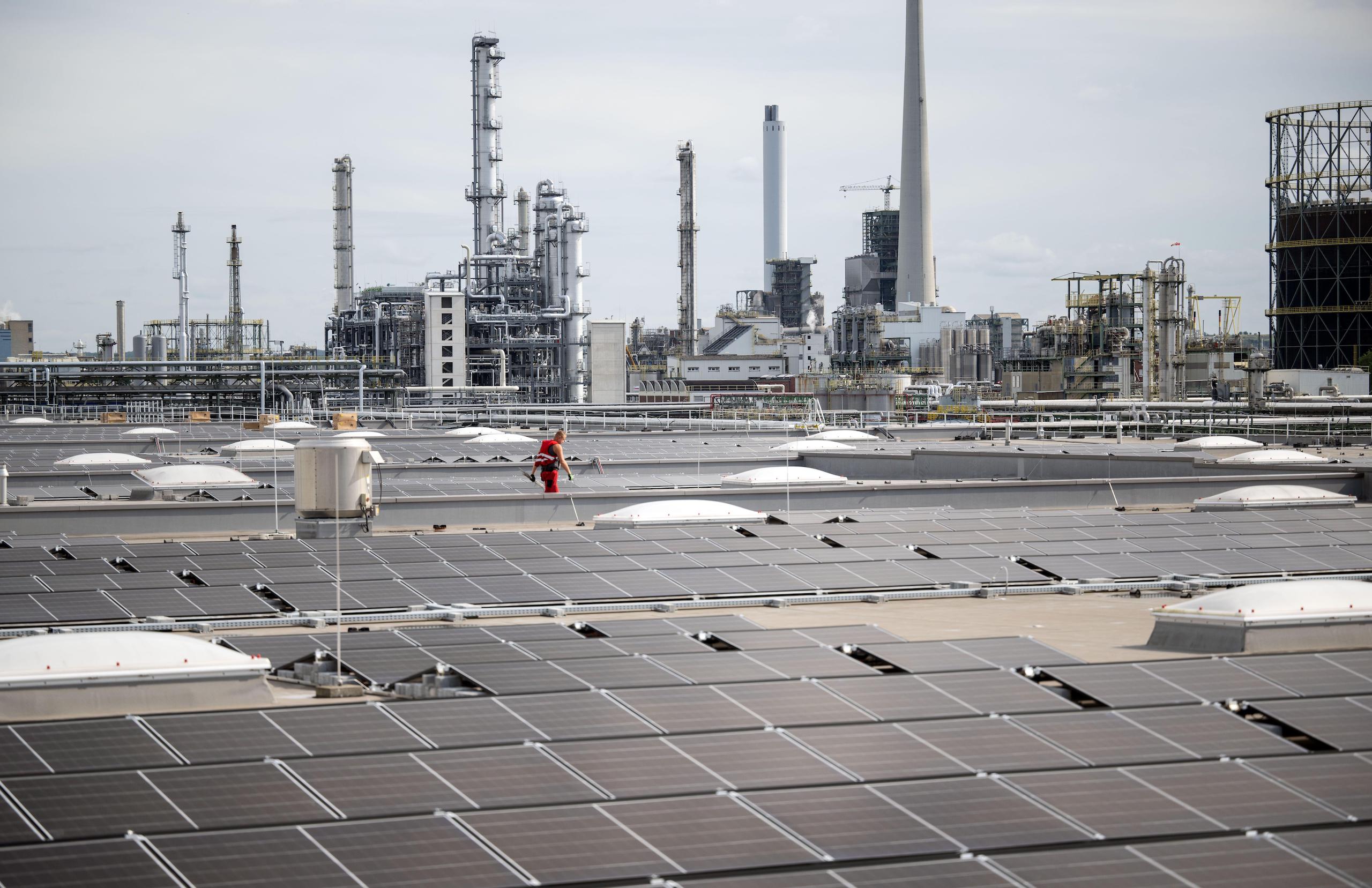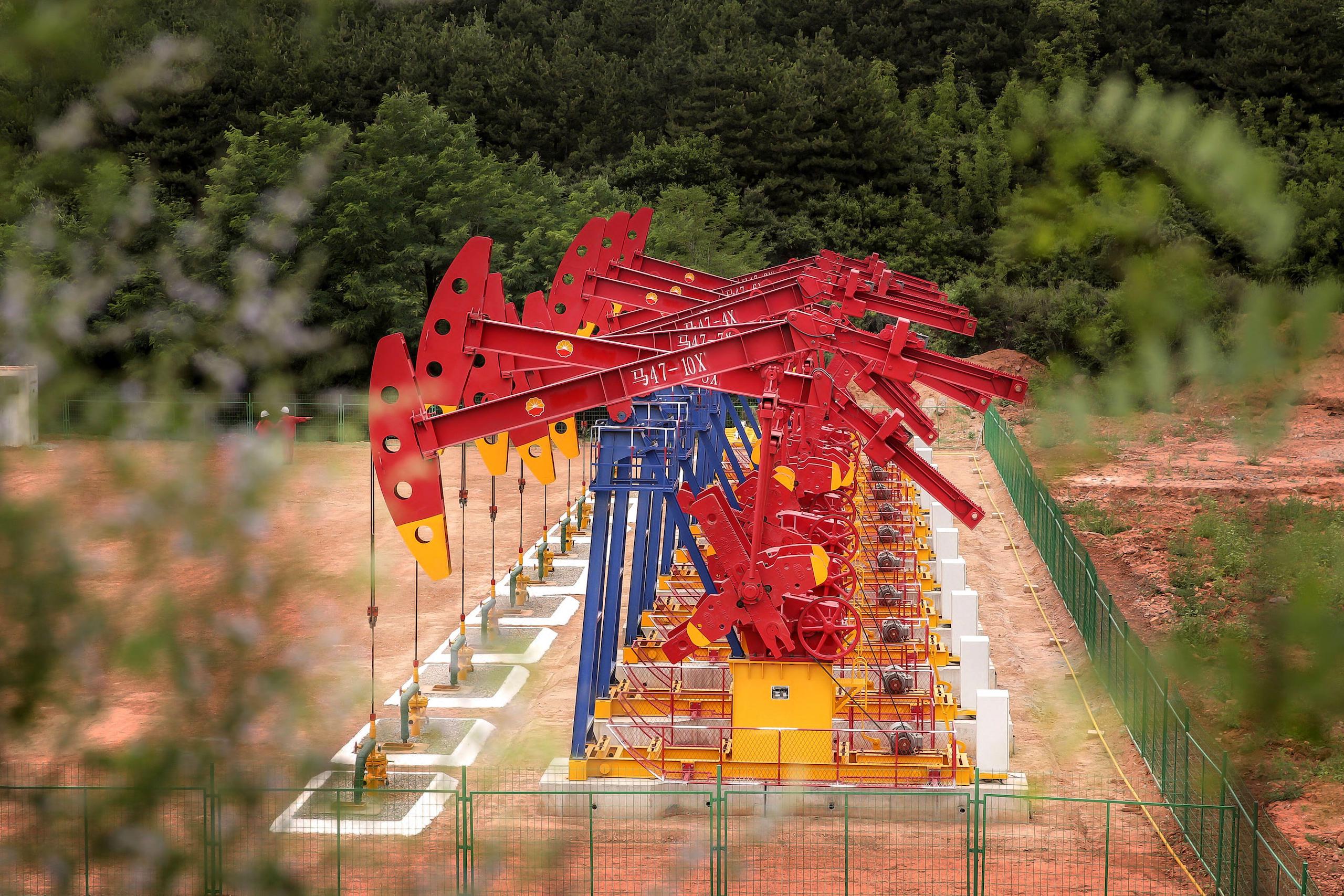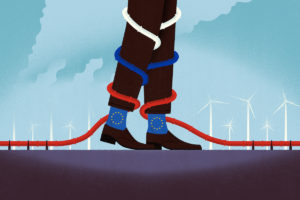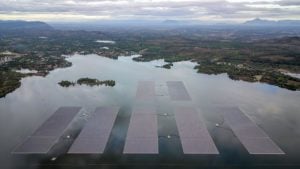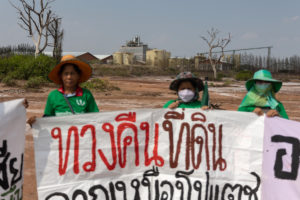On 7 November, China released a high-level plan on managing methane emissions that called for stronger monitoring and to “gradually improve the technical specifications for leak detection and repair in the oil and gas sector”. The little-highlighted link between natural gas and methane emissions, which the document points to, is just one of several challenges facing gas projects today.
More than 200 financial institutions around the world already have coal exit policies, under which they are ceasing to finance new coal projects and gradually divesting from existing ones. Natural gas, by contrast, is being cast by some as a cleaner alternative to coal and a “bridge fuel” for the global low-carbon transition.
Demand for gas has grown substantially in recent years and the technology for its extraction has continued to mature. Coupled with the fact that gas is often the preferred choice for energy security, plenty of countries have given gas projects their blessing, and its investment outlook appears highly promising. As the latest Banking on Climate Chaos report notes, liquefied natural gas (LNG) firms attracted nearly 50% more finance in 2022 than in 2021.
However, many high-profile gas projects have also flopped. These, and especially the features they have in common, need bearing in mind. According to a 2021 report from the NGO Global Witness, the EU has squandered almost 440 million euros (US$482 million) on gas infrastructure projects that have either failed or are likely to fail – and it’s not just an EU problem, as demonstrated by failed projects worldwide. This is a challenge for the gas industry on the whole, and it should be sounding alarm bells for future gas investments.
Unrealistic expected returns
In every gas-fired power project, anticipated return-on-investment figures are meticulously calculated at the appraisal stage. Actual profit, however, is heavily subject to fuel price fluctuations and supply instability, which can lead to projects being suspended and even cancelled.
The cost of generating electricity from gas is typically two to three times that of coal. Transport and distribution costs are high, and fuel generally accounts for up to 85% of the cost of power from gas. Fluctuations in the price of LNG have a critical bearing on the returns from gas-fired power generation. The volatility of exchange rates further adds to the uncertainty, given that most countries rely on imports for their supply of the fuel.
Two China-backed gas plants in Yangon, Myanmar, halted operations in July 2021, as reported on the Irrawaddy news site. The plants, fuelled by LNG imported from Malaysia, had become financially unsustainable after little more than a year. Reasons included the rising price of gas in international markets, the depreciation of the kyat against the dollar, a decline in electricity demand, and the government’s inability to pay electricity suppliers, a source from Myanmar’s energy ministry told the Irrawaddy. VPower, one of the owners, divested from two (out of its three) gas-fired power projects in Myanmar, leaving much of the government’s US$800 million investment stranded.
Myanmar’s is not an isolated case. Economic returns for many gas plants that rely on imported LNG are highly susceptible to geopolitical shifts.
Following Russia’s invasion of Ukraine, LNG prices went up worldwide, as Europe imported more of the commodity to reduce its dependence on Russian supply, according to analysis from thinktank the Institute for Energy Economics and Financial Analysis (IEEFA). The US cashed in by exporting more LNG to Europe, which pushed the price of gas on the US domestic market to its highest in nearly a decade, at $8.04/MMBtu (million British thermal units), compared with $1.96/MMBtu in 2016.
Stalled pipeline projects make supply uncertain
Unlike coal, gas plants usually require investment to build LNG terminals and pipelines, to ensure a stable supply of fuel. In some cases, pipeline projects are cancelled or suspended indefinitely due to cost issues, as well as environmental, social, and political concerns.
This has happened multiple times in the EU, most notably in the 2020 case of the Bulgaria–Romania–Hungary–Austria (BRUA) natural gas pipeline. The project soon stalled as no one downstream would commit to buying supply without confirmation of gas production upstream, while developers upstream could not progress without the assurance of downstream usage. Consequently, developers cancelled the 430-million-euro (US$472-million) project after completing only its first section. In the US, Duke Energy has since 2013 cancelled $11.6 billion worth of pipeline projects at various stages of development due to escalating costs, environmental lawsuits, and diminishing expected returns.
But the most high-profile, recent example of a pipeline rendered defunct might well be the sabotage of Nord Stream pipelines in 2022. These four natural gas pipelines run under the Baltic Sea linking Russia to Germany. The 16.9-billion-euro project was co-financed by companies from Russia, Germany, France, the Netherlands and Australia. The two pipes that constitute Nord Stream 1 came online in 2011 but Russia turned off the gas supply in 2022 following its invasion of Ukraine. A new pair of pipes, called Nord Stream 2, was completed in 2021 but never came online. Doubts over the future of Nord Stream were subsequently cemented when a series of manmade explosions ruptured three of the four pipelines. As of March 2023, plans were in place for Nordstream to be mothballed.
When a pipeline cannot come into service as expected, it removes an affordable, dependable supply of gas, which in turn leaves potential proceeds from gas power projects even more vulnerable to market fluctuations.
Demand squeezed by the renewables boom
The market share for gas-fired power has been shrinking with advances in renewable energy tech, along with policies that prioritise grid connections for renewables. According to the energy thinktanks Ember and IEEFA, in 2022 power generated from wind and solar in the EU exceeded that from natural gas for the first time – and the gap is widening.
Generators of gas-fired power have clutched at the fuel’s notional status as a “transitional energy” as something of a last hope. Meanwhile, however, peaks in power demand are being brought down by the remarkable development of distributed energy resources (DER) – smaller, consumer-side power generation sources – such as rooftop solar systems and battery storage. In scenarios studied by IEEFA, rooftop solar and battery storage with battery trading could reduce peak demand for electricity in the 4-8 pm market by 67%-92%. Australian households have already spent around A$25 billion ($16.3 billion) on DER, and that figure is likely to grow at least sixfold over the coming decade. In France, the market for demand-side flexibility (the portion of electricity demand that can be increased or reduced) was approximately 2.4 gigawatts in 2022, and is expected to grow by 12% in 2023. With the development of demand-side response and power storage technologies, the peak demand curve for electricity will flatten, and demand for transitional energy sources such as gas will fall.
In addition, fossil fuel power plants have been criticised for the huge sums they charge when regulating peak demand, even when allowing for exceptional circumstances where renewable power fails to satisfy the peak demand. In March this year, for example, the Guardian reported that the Coryton gas-fired plant in Essex, UK, had bids accepted to produce power at £1.95 per kilowatt-hour – well above the average of between £0.2 and £0.4. This exorbitant tariff sparked a furore, even after accounting for British consumers’ adaptation to higher electricity costs since the Russian invasion of Ukraine. Months later, Ofgem, the UK regulator for gas and electricity markets, announced new rules to prevent backup generators from reaping excessive profits.
‘Clean’, but not low-carbon
The climate policies and low-carbon transition commitments of various countries have no doubt constrained developments in the fossil fuel industry. Natural gas may be a “clean” energy for some, but increasingly, the impact of greenhouse gas emissions policies on the industry cannot be overlooked. In fact, agencies such as the United Nations Environment Programme reject the idea of natural gas as a first choice for tackling climate change. At the same time, many governmental and financial organisations are considering new policies and transition roadmaps for managing expansion of the gas sector.
Gas-fired power plants emit 50% less CO2 than coal-fired plants, but technology limitations on monitoring methane emission and leakage mean that total life-cycle methane emissions of natural gas have long been underestimated. As a greenhouse gas, methane has 80 times the potency of CO2 in the first 20 years after it reaches the atmosphere. Taking methane leakage into account as part of a life-cycle emissions analysis puts paid to any notion of natural gas being a “clean” source of energy. A study published this year in the journal Environmental Research found that even with methane leaking at a rate of just 0.2%, carbon emissions from coal and gas are practically the same over a 20-year period. And when different rates of leakage are factored in, total life-cycle greenhouse gas emissions from natural gas are likely to exceed those from coal.
The technology for collecting data on methane emissions has evolved in recent years. Comprehensive satellite surveillance now enables closer scrutiny of existing gas projects for methane leakage. The EU and US have started to develop stricter limits for methane emissions. While the identification of excessive emissions is unlikely to force all gas-fired plants to shut down, compliance-driven emission retrofits would push up operating costs, further weakening their competitiveness compared with other energy sources. Meanwhile, proposed new projects will increasingly have to shoulder additional environmental liabilities before they can be approved. In South Africa, for instance, methane emissions – and their detrimental impact on the community – have become a central argument in several legal challenges to proposed natural gas projects. Such projects can be expected to face more constraints as the climate crisis intensifies and the regulatory regime for carbon emissions tightens.
The progress of gas projects, which are usually reliant on transnational corporations for investment and operations, can also be significantly hindered by local opposition.
French conglomerate TotalEnergies’ LNG project in Mozambique is the country’s first onshore project of its type, but the attendant “gas rush” in Cabo Delgado province has triggered resistance from civil society. The “Say No to Gas! in Mozambique” campaign, formed by an alliance of international and domestic NGOs, argues that the greenhouse gas emissions and extractive activity associated with the project will have a devastating and irreversible impact on the surrounding environment, both onshore and offshore. In particular, they are concerned about the critically endangered species and unique ecosystems of the Quirimbas Archipelago, a UNESCO biosphere reserve, as well as the potential for soil and water contamination from the project to harm local residents’ health. Amidst a halt to activities due to militant insurgent activity, environmental groups have been pressuring banks and financiers to stop funding the project.
As many natural gas projects have shown, terms like “transition fuel” and “clean energy” are simply PR slogans for gas firms faced with declining prospects. Natural gas projects can appear highly attractive investment opportunities, but a gamut of issues often lies ahead. The impact of geopolitical factors and fluctuating exchange rates on gas prices and stability of supply, along with the overarching appetite for a low-carbon transition involving climate regulations and renewable energy development, can undermine the profitability of individual gas projects to the point where they may be shelved or cancelled. Given the catalogue of failed projects to date, and the foreseeable risks of such investments, they need to be looked at from a long-term perspective to prevent serious potential losses.

